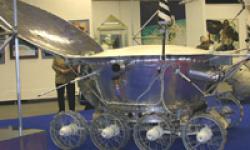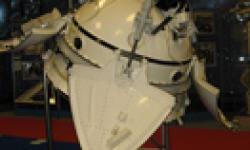The Cosmonautics Museum in Moscow, Central Federal District, Russia, traces the history of Russian rocketry and space exploration from the 1920s to the present day. Cosmonautics Museum is housed in the base of the impressive monument To the Conquerors of Space, an enormous silver rocket soaring into the sky on a 100-meter tall stream of glistening Titanium. Undoubtedly the most impressive Soviet construction in Moscow, Central Federal District, the monument was built in 1964 to commemorate the launch of Russia's Sputnik, the world's first artificial satellite. The monument's granite pedestal is graced with a statue of Konstantin Tsiolkovsky (1857-1935), the founder of theoretical astronautics and the father of Russian rocketry and the base's sides are decorated with tableaux featuring scientists and engineers hard at work, Lenin leading the masses into space and a woman offering her baby to the sun. In front of the enormous space obelisk stands the Avenue of Cosmonauts, featuring busts of renowned Russian scholars and cosmonauts, including the legendary Yury Gagarin, the first man in space.
Cosmonautics Museum itself was opened to commemorate the 20th anniversary of Gagarin's first flight into orbit and was the brainchild of the Chief Designer of the Soviet Space Program, Sergey Korolev. The Museum interior is fantastically atmospheric and covered with constellations, star clusters and distant universes. The Museum charts the most important Russian and Soviet achievements in space exploration, from the launch of the first artificial satellite and the first manned space flight to the first moonwalk. It exhibits a fascinating array of space paraphernalia from the very first rocket engine, designed, built and tested by the engineer F. Tsander in 1931, mock-ups of satellites and moon-walkers, cosmonauts' space suits (including Gagarin's) and numerous photos from Star City, Russia's cosmonaut training center.



Cosmonautics Museum reviews
Login to comment